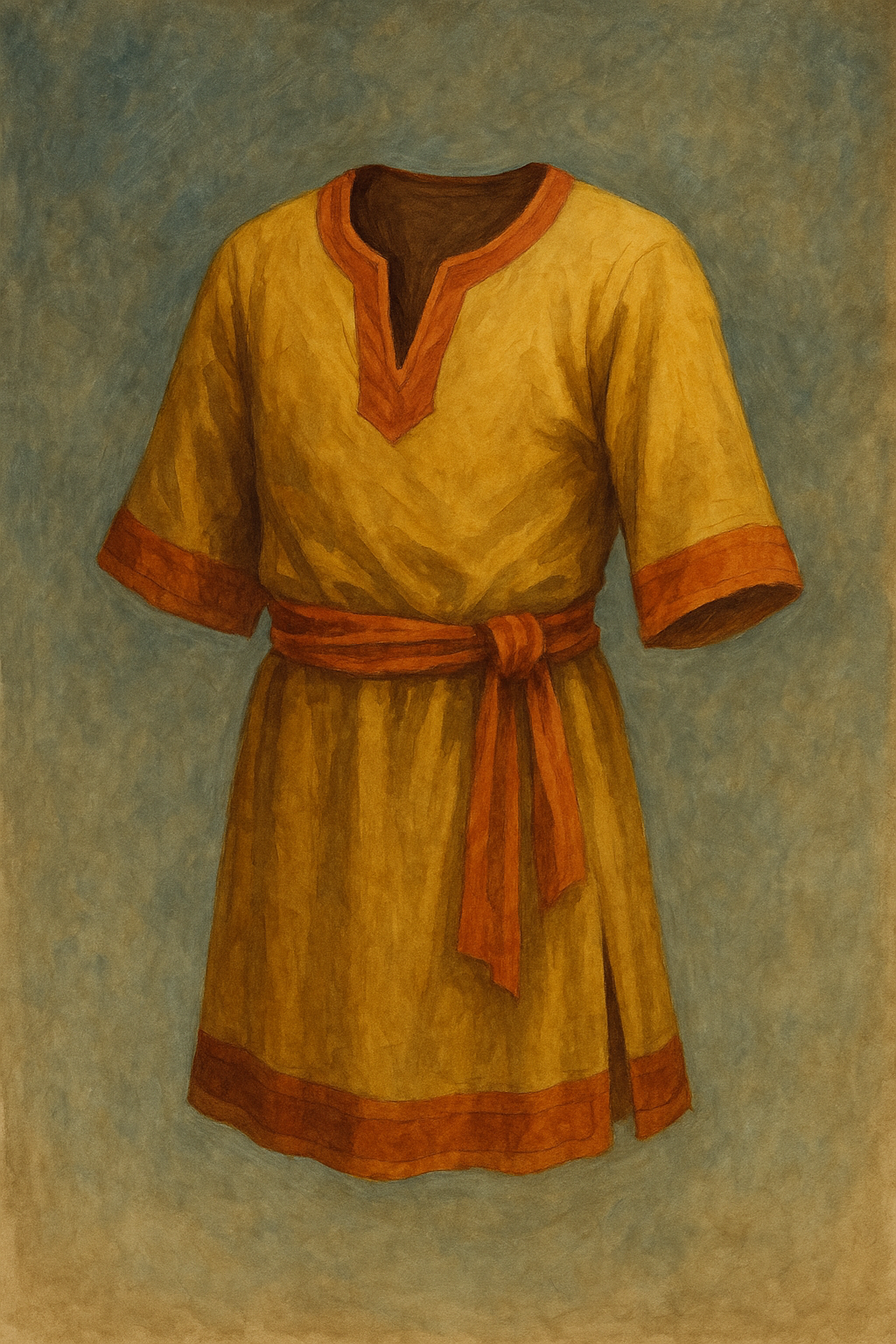Farleyn
The farleyn is a traditional Skarmite tunic, originally worn by the early seafaring tribes of the region. Designed to shield against the harsh rays of Nir, the biting sea breeze, and the skin-chafing sting of salt, it remained the favored garment of fishermen and sailors for centuries. In modern times, more practical attire has taken its place at sea, but the farleyn endures in traditional dances during festive occasions, and ceremonial variants are still worn by high-ranking naval officers in official functions.
Mechanics & Inner Workings
The farleyn is a long sleeved tunic consisting of two layers sewn together. It splits at legs' height to offer greater mobility on deck duties.
The outer layer is made from a tightly woven linen fabric, white or bright in color, usually reinforced with an insulating substance. Its purpose is to provide adequate protection against all kinds of weather at sea. Its thick weaving keeps salt from reaching the skin, creating a crust that can easily be removed instead. Legend has it that fishermen of yore used the salt from their farleyn to preserve their catch.
The inner layer is made out of wool, to wick away the sweat and humidity, keeping the wearer comfortable during their prolonged exposure to the elements.
Manufacturing process
Ancient manufacturing processes were laborious, requiring multiple people working over several weeks to produce a few garments. The task was usually undertaken over the harshest part of Sleep, during which the extreme sea storms prevented the tribes from fishing and travel.
Linen was spun out of elderflax, using specialized looms, capable of the required thick weaving. This was the most laborious part, as linen takes a lot of time to make. It was then treated using a mix of elderflax seed oil, sea-monster fat and tree resin to make it water- and weather proof. The composite linen was then dyed using an onion skin solution and sun bleached until they became very bright.
The internal layer was woven using sheep's wool and sewn on the outer shell.
Modern variants differ from the original, as they are not actually used at sea, but on land, to honor tradition. They are still handcrafted by specialized workshops. A breathable linen is substituted for the thick outer layer, to provide comfort for the dancers donning the traditional dress, while the inner layer may be forgone. The ceremonial garments made for the navy are usually more substantial, they bear the colors of the navy and Skarm and are decorated using embroidery and buttons with precious gems or tortoise shell.
High-ranking officers wear variants made from finer materials such as silk.
History
The farleyn was a product of necessity. It was invented by the tribal people of the Age of Barbarity, living in settlements around the modern Skarm region.
Its name is Proto-Dorian and can be translated as 'sea tunic.' Historians have uncovered ancient inscriptions referring to it as 'Fllamish,' which suggests a northern influence. This notion is backed by the integration of wool, which was not widespread in the southern region. The composite garment is most probably a product of early cooperation between tribes, showcasing that unity was not a foreign concept to mankind prior to dwarven influence.
Earlier versions have withstood the test of time, a testament to the craftsmanship that went into its creation.
Garments similar in functionality appeared in other parts of the Dorian south around the same time, but they failed to attain the same qualities.
It is believed that the farleyn played a critical role in Skarm becoming the true nautical power of Doriande.
Modern materials and manufacturing processes have produced lighter and cheaper alternatives, replacing it as the go-to seafaring garment, but the farleyn maintains its cultural significance as a symbol of ingenuity, perseverance and legacy.
Significance
Skarmites are a proud people, who honor their traditions. Families pass ancestral farleynes down the generations. Children learn the traditional sailor dances using modern outfits based on it.
No medal or ceremonial weapon holds more value to a naval officer than their farleyn.
The farleyn symbolizes the ancient connection of Skarm's people with the seas, their survival over any trial and their well-deserved autonomy.
Ceremonial farleyn, used in traditional dances (via Dall-E)



Comments